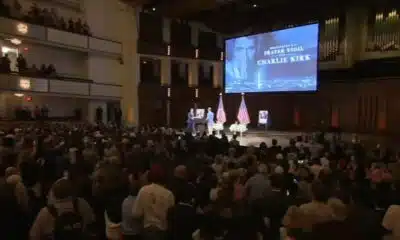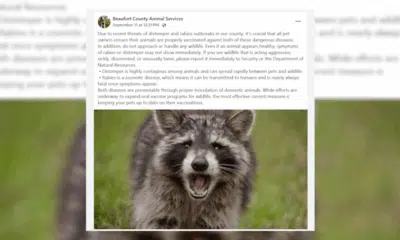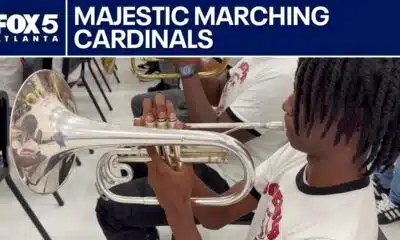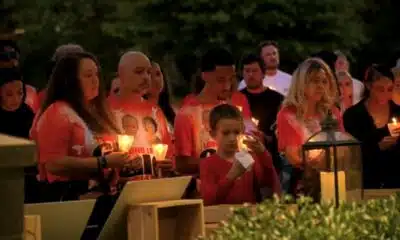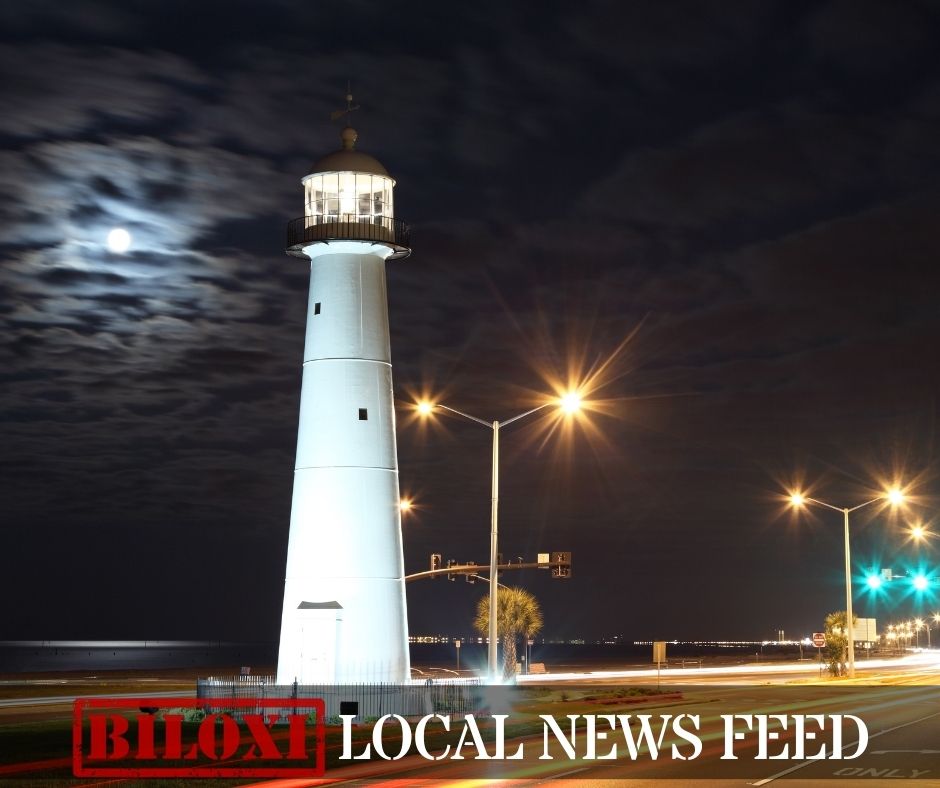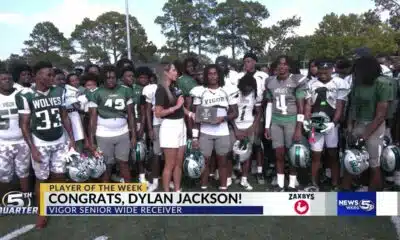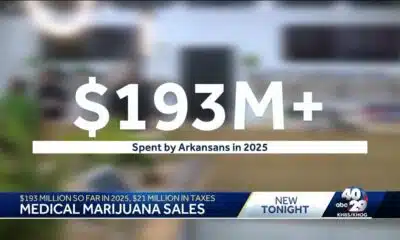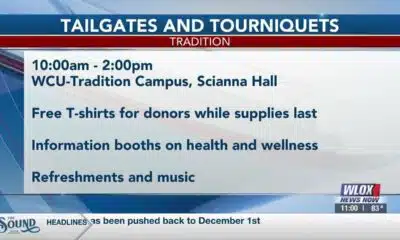News from the South - Virginia News Feed
Va. community colleges end diversity, equity and inclusion practices
by Nathaniel Cline, Virginia Mercury
March 25, 2025
Virginia’s 23 community colleges will be required to ensure all of their programs and practices comply with federal regulations to ensure everyone is treated fairly and equally, ending policies that promote diversity, equity and inclusion.
The decision by the Virginia Community College System’s State Board is in response to President Donald Trump’s executive order to eliminate DEI initiatives, which are designed to overcome historic inequities and discrimination that blocked progress for minorities and women. The VCCS directive applies to several areas including admissions, hiring, promotion, compensation, financial aid, scholarships, prizes, administrative support, discipline, housing, and graduation ceremonies, according to the March 20 resolution.
The Trump Administration has also warned colleges and universities to end race-based decision-making or risk losing federal funding, which many institutions rely on to cover Pell Grants and the federal student loan program.
Feds to Virginia schools: End race-based policies or risk losing funds
The VCCS’ resolution also directs Virginia community colleges to avoid attempts to get around the new rules and to end reliance on third-party organizations that assist in implementing race-conscious policies.
“Adopting a resolution to affirm our values and compliance with recent guidance on discrimination and merit-based opportunity and amending language in our policies and strategic plan are critical necessary actions to ensure federal funding for Virginia’s Community Colleges is not compromised,” said VCCS State Board Chair Terri Thompson, who was reappointed by former Gov. Ralph Northam. “It is our continued ability to provide students with high-quality educational and training opportunities that is at the heart of our mission.”
The board’s decision also led to several changes to the system’s strategic plan, which outlines the VCCS’ goals and objectives, including removing the goal of increasing the diversity of full-time faculty and staff by 5% by 2030.
The decision also changed some areas of the policy manual, including renaming its advisory council on “diversity, equity, inclusion and culture” to “culture of care and success.”
David Doré, VCCS chancellor, said the changes made don’t impact the system’s mission, which is to help people learn new things and glean better skills to enhance their lives and help their communities get stronger.
Del. Michael Jones, D-Richmond, told WRIC last week that the board needs to reverse the decision, adding that VCCS’ diversity policies help ensure minorities, who he says have been subject to systemic racism, have the same opportunities as their white counterparts.
“It bothers me when people come up to me (and say), ‘I don’t see race,’” Jones said to the television news station. “You need to see race because when you see race you will understand and see the obstacles that I had to face, the challenges I had to overcome, just simply being born the color that I am into the system or the country that I was born in.”
State Republicans applauded the board’s decision, including Del. Mike Cherry, R-Colonial Heights, and Del. Tom Garrett, R-Buckingham, both members of the House Education Committee.
During the past two sessions, Garrett introduced proposals to amend the Virginia Human Rights Act to prohibit discrimination based on race and sex.
After the proposal failed to pass in 2024 and was revised to exclude “sex” in January, the Democratic-controlled House did not hear the proposal.
“We need to be aware of the negative impacts of our past mistakes, but (also) that we do not correct those going forward by considerations for promotion and opportunity beyond merit and one’s ability to serve their community,” Garrett said.
Cherry added that Virginia’s community college system is an “important link” in the state’s higher education offerings, particularly for first-generation and working adult families.
“Ending the divisiveness of DEI programs at VCCS and all public colleges and universities allows them to stay focused on one of their main objectives, which should be making a college degree attainable and affordable for all Virginians, and I support their decision.”
GET THE MORNING HEADLINES.
Virginia Mercury is part of States Newsroom, a nonprofit news network supported by grants and a coalition of donors as a 501c(3) public charity. Virginia Mercury maintains editorial independence. Contact Editor Samantha Willis for questions: info@virginiamercury.com.
The post Va. community colleges end diversity, equity and inclusion practices appeared first on virginiamercury.com
News from the South - Virginia News Feed
Some employers take action against employees for social media comments on Charlie Kirk's death
SUMMARY: Following Charlie Kirk’s death, some Virginia employers have taken action against employees who made controversial social media comments. In healthcare and education sectors, individuals were placed on leave or terminated for remarks deemed unprofessional or supportive of violence. Riverside Walter Reed Hospital fired an anesthesiologist, and Newport News and Accomack County schools disciplined staff members. Experts highlight the blurred line between personal expression and professional conduct due to social media’s reach. William and Mary law professor Margaret Hugh emphasized that employment laws and at-will policies allow employers broad authority to act. She urges unity and respect amid heightened tensions.
Some Virginia employers are taking action against employees for social media comments made regarding Charlie Kirk’s death. A legal expert weighed in on where the line is drawn.
Subscribe: https://www.youtube.com/user/wvectv/?sub_confirmation=1
Download the 13News Now app: https://bit.ly/13NewsNowApp
Watch 13News Now+ for free on streaming: https://www.13newsnow.com/13NewsNowPlus
Check out our website: https://www.13newsnow.com/
Like us on Facebook: https://www.facebook.com/13newsnow/
Follow us on X/Twitter: https://x.com/13newsnow
Follow us on Instagram: https://www.instagram.com/13newsnow/
News from the South - Virginia News Feed
Area of interest forms in the Atlantic
SUMMARY: On September 11, 2025, Chief Meteorologist Tim Pandages reported on Hurricane Hub Live about tropical developments in the Atlantic and eastern Pacific. In the Atlantic, a low-chance area of interest near the Cabo Verde Islands may become Tropical Storm Gabrielle but requires favorable conditions. Recent tropical waves have struggled due to stable atmospheric conditions. Models show possible development east of the Leeward Islands with a likely recurving path away from Bermuda. In the eastern Pacific, Tropical Depression 13E has formed, expected to become Hurricane Mario, the season’s 8th hurricane. The Atlantic has had only one hurricane so far, Major Hurricane Aaron. Activity is expected to increase into October.
The newly formed area of interest could become Invest 92-L off the coast of Africa. Find out about that and more during tonight’s episode of Hurricane Hub LIVE! Livestream from Thursday, September 11, 2025.
Subscribe: https://www.youtube.com/user/wvectv/?sub_confirmation=1
Download the 13News Now app: https://bit.ly/13NewsNowApp
Watch 13News Now+ for free on streaming: https://www.13newsnow.com/13NewsNowPlus
Check out our website: https://www.13newsnow.com/
Like us on Facebook: https://www.facebook.com/13newsnow/
Follow us on X/Twitter: https://x.com/13newsnow
Follow us on Instagram: https://www.instagram.com/13newsnow/
News from the South - Virginia News Feed
Cat cafes, chromotherapy and pumpkin delivery: Here’s what’s new in RVA this September
SUMMARY: This September in RVA, Patch to Porch RVA delivers handpicked pumpkins from local farms, offering design, setup, and cleanup services for homes and events in Richmond, Henrico, and Chesterfield. Shore Pump introduces Beam Light Sauna, featuring infrared sauna and chromotherapy, promoting detox, skin renewal, and wellness with customizable sessions and memberships. The Fan now hosts River City’s first cat café, The Perfect Bean, combining a coffee bar with an adoptable cat lounge upstairs. Sourced locally, their drinks include seasonal, cat-themed specials. Cats come from Purring Hearts VA rescue, offering adoption opportunities, fostering community engagement and animal welfare.
What’s New in RVA is dedicated to informing you about the latest happenings in the Richmond area.
-
News from the South - Kentucky News Feed7 days ago
Lexington man accused of carjacking, firing gun during police chase faces federal firearm charge
-
News from the South - Alabama News Feed7 days ago
Zaxby's Player of the Week: Dylan Jackson, Vigor WR
-
News from the South - Arkansas News Feed7 days ago
Arkansas medical marijuana sales on pace for record year
-
News from the South - Missouri News Feed7 days ago
Local, statewide officials react to Charlie Kirk death after shooting in Utah
-
Local News Video7 days ago
William Carey University holds 'tailgates and tourniquets' blood drive
-
News from the South - North Carolina News Feed5 days ago
What we know about Charlie Kirk shooting suspect, how he was caught
-
Local News6 days ago
US stocks inch to more records as inflation slows and Oracle soars
-
Local News6 days ago
Russian drone incursion in Poland prompts NATO leaders to take stock of bigger threats





